Launching a brand-new car can be fraught for any carmaker. Launching a completely new brand, on the other hand, can present issues of nightmare proportions. When Mazda tried it with Xedos in the early-1990s, it failed abysmally. Nissan’s dogged attempts with Infiniti hardly represent a shining example. Yet, Peugeot-Citroen persevered with DS, its company personnel swearing blind that something new and fresh would come our way, even though most critics figured that the likelihood of a rehashed Citroen would be all it could muster.
Pulling DS from its corporate hat was a strange decision. After all, DS represented a solitary model line that had spun iconic styling on its head from the mid-1950s. It was the model that made every other carmaker look to its laurels, so far advanced was it in both form and functionality. However, it could be accused of having led to that most confusing period of Citroen’s existence, almost breaking the firm but culminating in French government, Michelin Tyre and then the formation of the PSA Group as its route to survival.
Since that time, Citroen has tried exceedingly hard to offer something traditionally French in appeal that has been subsumed into a corporate and largely characterless mire. Fortunately, despite pursuing the VW shared-platform ethos, inevitable management changes enabled Citroen to creep inexorably from the immense Peugeot shadow, reinforced by a small range of bling-laden DS models, with 3, 4 and 5 variants working very hard to impress…sometimes too hard.
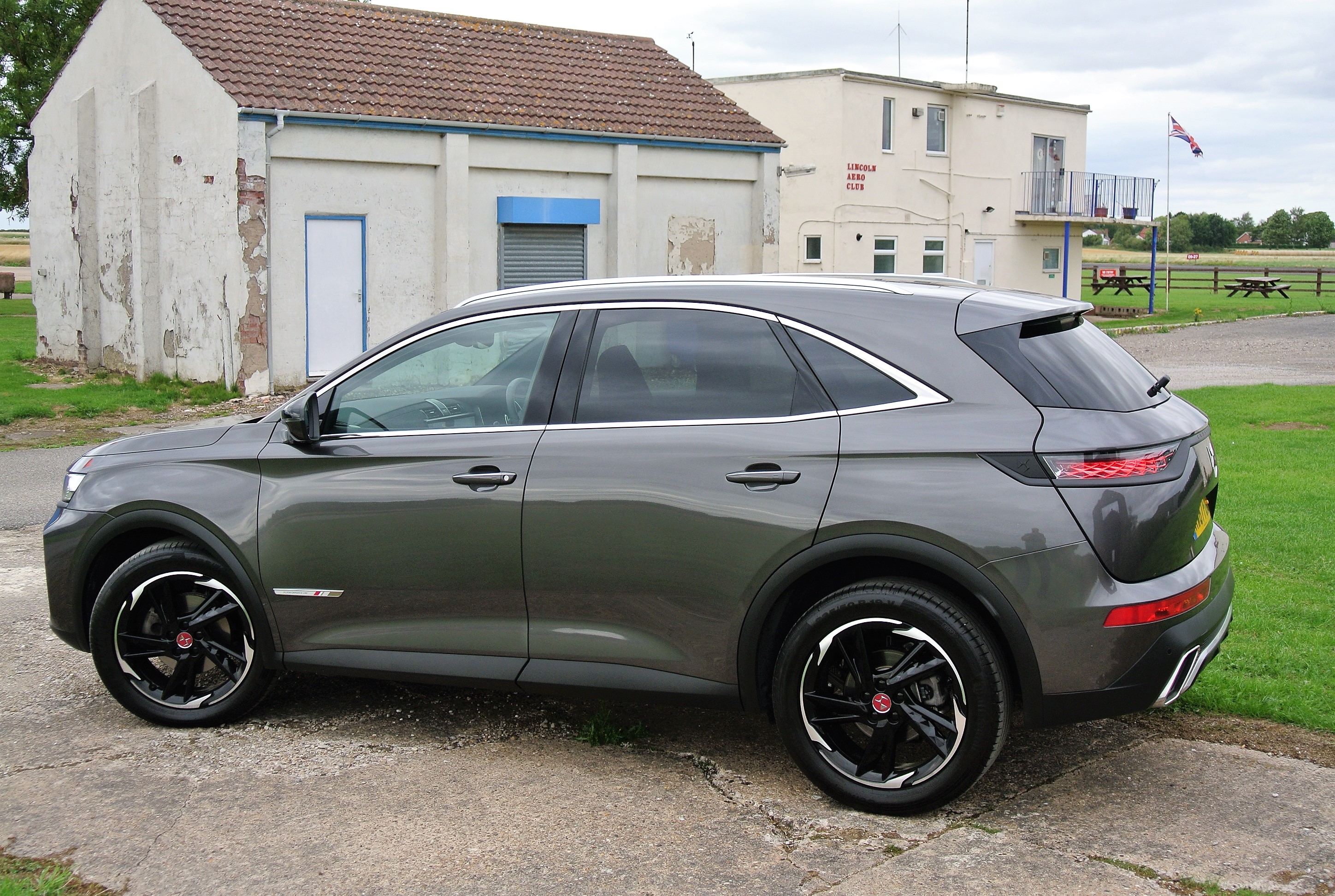
In the past four years of DS existence as a stand-alone brand, a succession of cruel but understandable jibes have been made about those formerly Citroen-branded models. Both Audi and Lexus are prime examples of making a more aspirational name work and, while it is easy to refer to them as costlier VW, or Toyota, models, they are recognised as high-end brands in their own right. DS needed an ‘Audi’.
With DS7, it has it.
In Crossback Performance-Line, driven by a 180bhp turbo-diesel 2.0-litre and 8-speed auto-box, the new DS7 hits the mark. It is gorgeous to look at. Well-proportioned, it is an expression of subtle style-consciousness that plays defiantly with mid-size SUV aspirations. From its prominent radiator grille, to its pert tail, the DS7 is every millimetre a star turn that exists because it deserves to. In fact, photographs hardly do it justice.
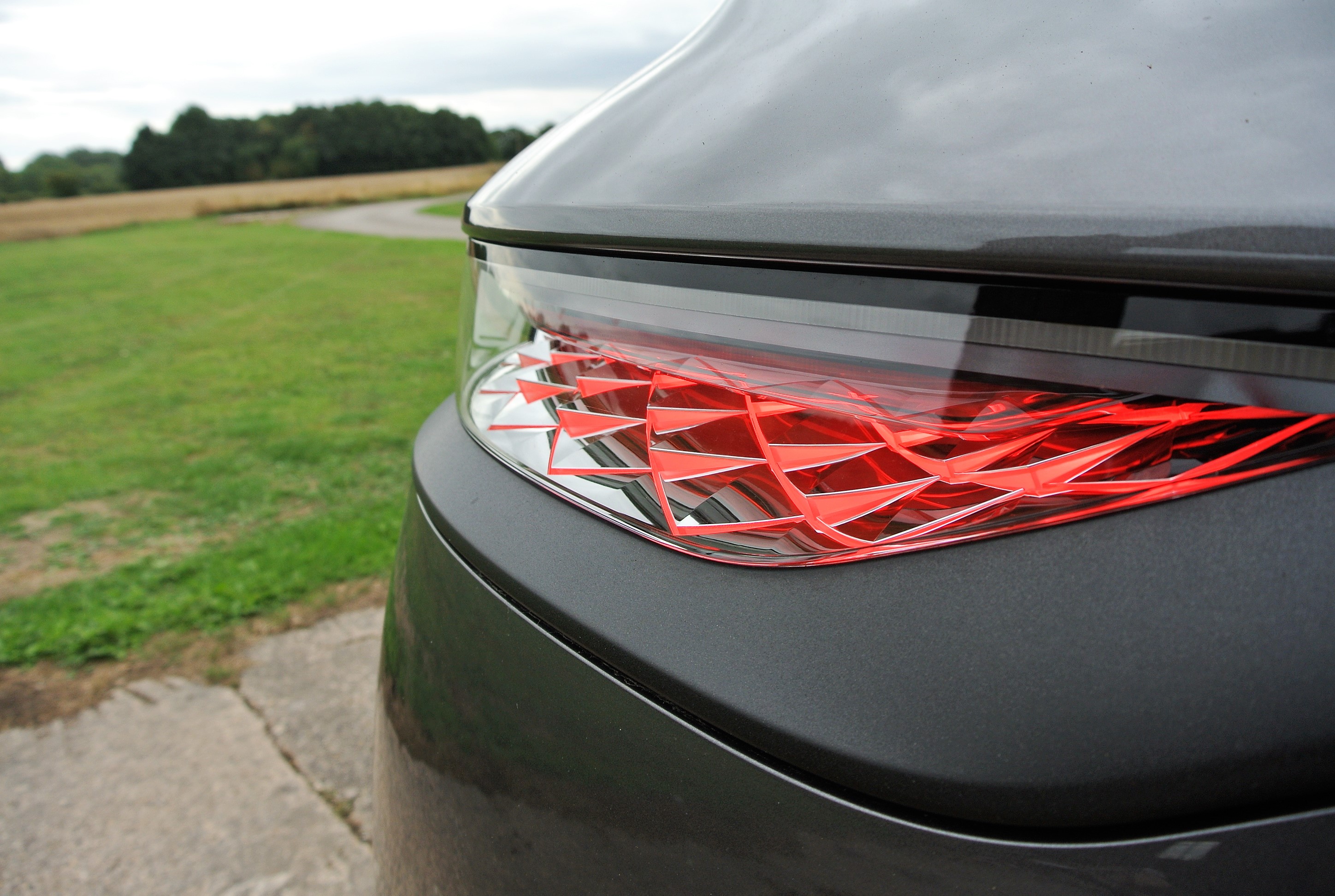
Packed to the gunwales with viable technology, its biggest sin is that the DS7 driver cannot see the Dervish dance of the front headlamps, as they are fired into life, although the 3D-pillow treatment of the LED tail-lamps, which can be observed, is both attractive and different to any rival product. While variable headlighting is not new technology, the manner by which DS uses it is exceptionally ingenious and painstakingly Gallic.
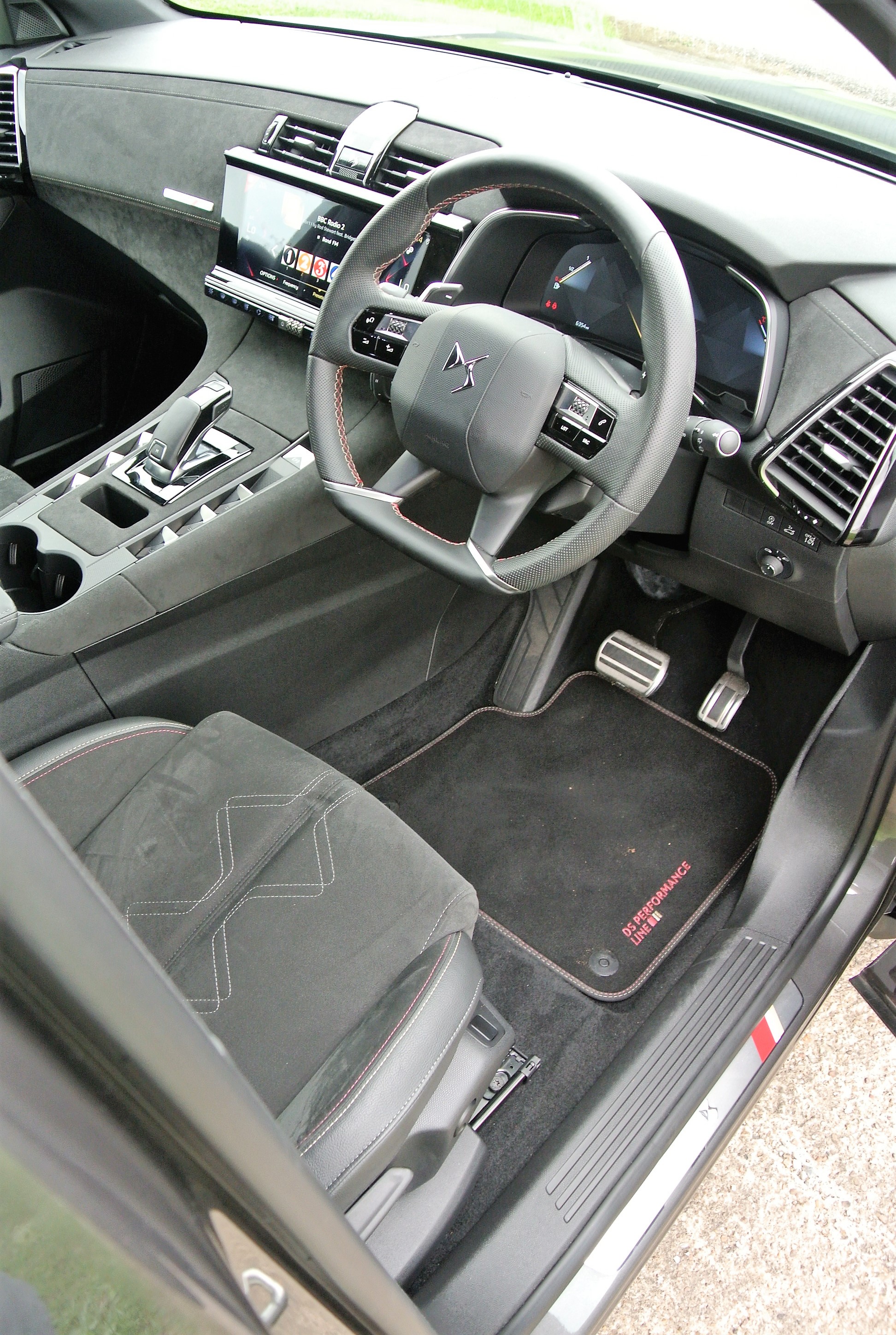
Left in ‘Auto’ mode, the multi-module, powered front LED units demonstrate their remarkable flexibility through predetermined Town, Country and Motorway settings, the intensity of illumination varying according to conditions and all without driver intervention. At maximum volume, the beam range is an amazing 520m on high beam. A night-into-day reality is attained dynamically. Yet, even the ‘welcome lighting’ function is intriguing, from its initial purple ‘wake-up’ hue through ‘follow-me-home’ settings, location and marker illumination. The lighting performance is further accentuated by scrolling indicators, all of which can be managed by delving into the dashboard touch-screen.
The beautifully proportioned exterior of DS7 is balanced by an equally space-conscious and eye-catching interior. Needless to say, soft touch materials abound, from the nubuck dashboard covering, reversed for the suede-like panels, but cladding almost every surface within the car, to the ‘DS’ logo impressions on switchgear. Personally, I have never experienced such visual high-quality within any French car, although it is something for which I have hoped for many years. Yet, it is not overt. It avoids being OTT. It is immensely impressive and the fit and finish is of Audi-grade perfection, without the clinical severity.
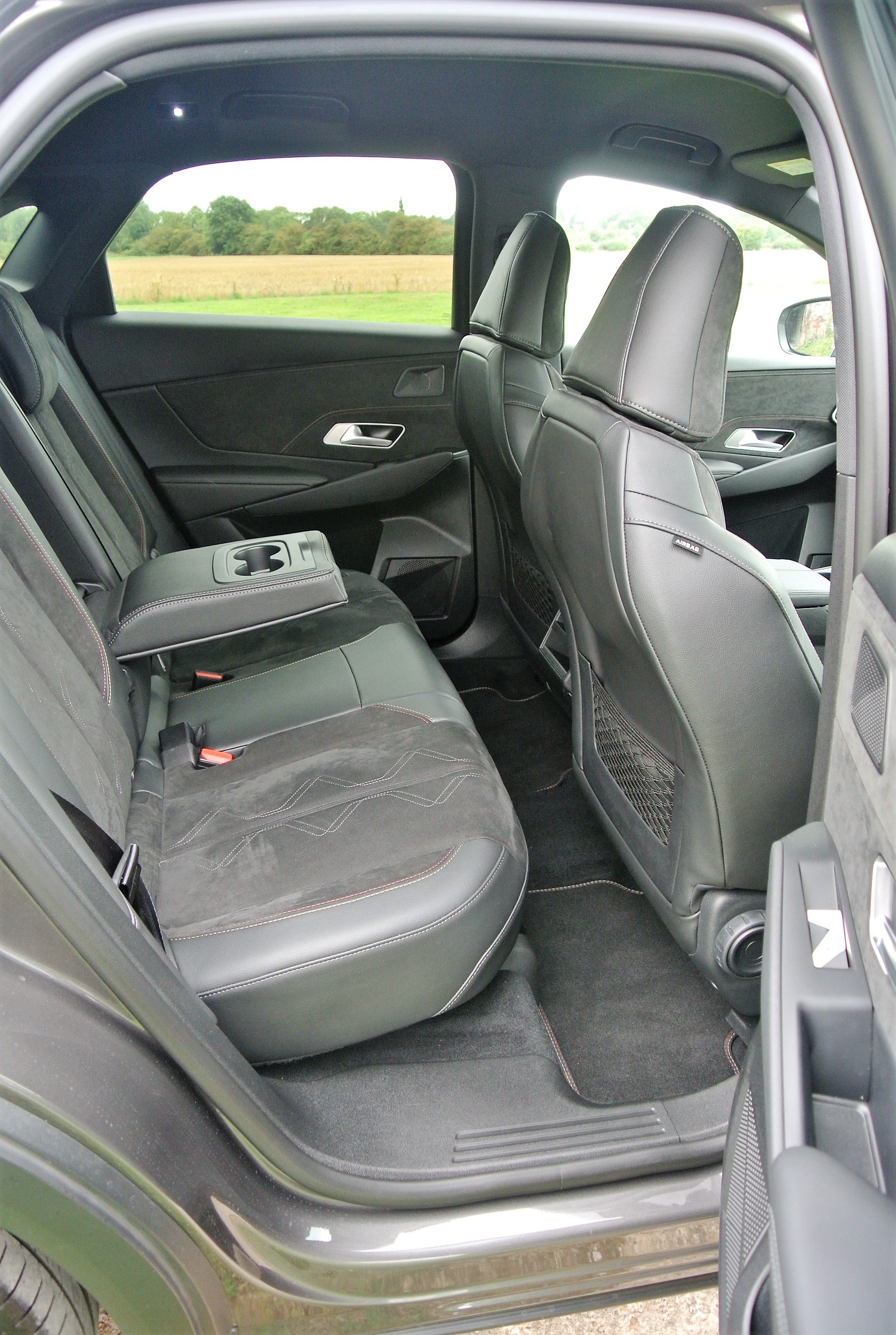
As a mid-range model, the Performance-Line lacks some of the electronic fripperies of both Prestige and Ultra-Prestige versions but, list-priced very competitively at £36,380, you would have to spend another £3,000 and then a further £4,200 to be elevated into those models. The range starts in Elegance trim at £28,095, before FCD discounts are applied. While electrically operated and heated seats are an option on the test car, they are included in the upper ranges.
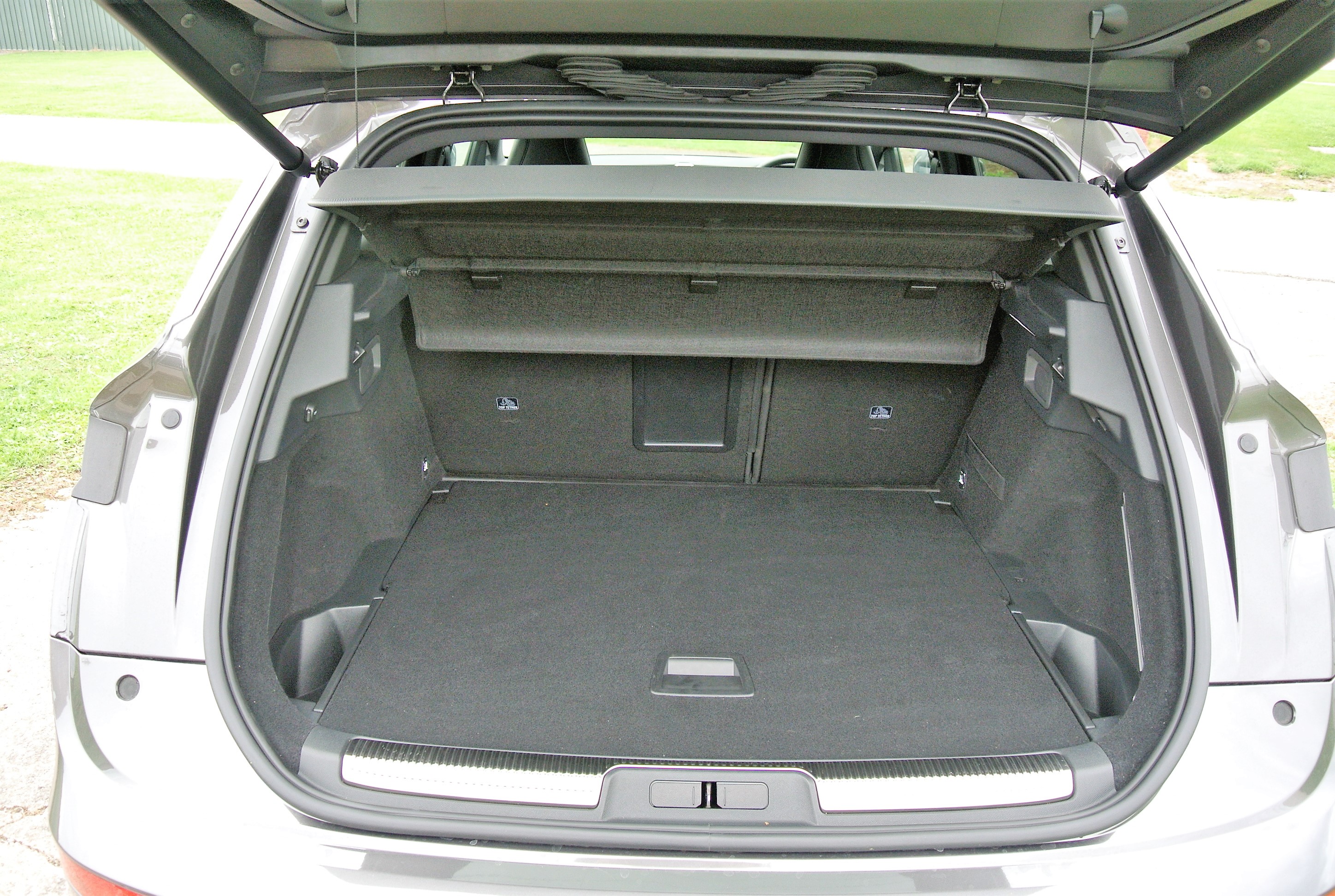
Space has been optimised within the dark interior of the DS7, however, comfort was an obvious key. From a purely personal viewpoint, my two metres of height is accommodated impeccably and Peugeot’s silly dashboard and teensy steering wheel clearly have no role to play for DS, which reverts to the more comfortable convention of a flat-bottomed tiller and rake and reach adjustability that is both generous and hugely satisfying. A near-Germanic use of space demonstrates that DS has executive aspirations markedly above those of its sister products. Its front seats are exceptionally comfortable and supportive, while there is bags of room for three-abreast in the rear and the boot offers a substantial 618-litres, with the rear seats up and the parcel-shelf in place.
The engine delivers strong power across its rev-range and its transmission seems to work better in manual mode, rather than being left to its own devices. Its top speed of 134mph, with 0-60mph covered in 9.6s, while sipping fuel at up to 57.6mpg, emitting 128g/km of CO2, and all are respectable figures. However, its ride quality is sublime in selected Comfort mode and the overall handling characteristics are as Gallic as French cars always used to be, cosseting, yet competent. Grip levels are excellent. I am immensely impressed by the DS7.